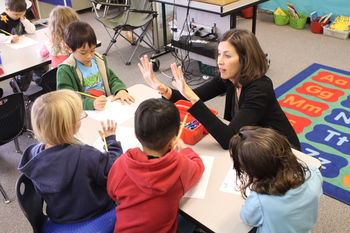New School Improvement List

In one of OSPI's first significant announcements about the new Every Student Succeeds Act (ESSA) implementation, we now have the new list of our state's schools that need the most support to succeed (click the supports tab to find the schools by district).
In a major change of focus from the old, punitive No Child Left Behind law, the Washington School Improvement Framework lists schools that were identified through multiple measures of academic and school quality indicators, not just test scores. They will have over three years instead of one to identify and implement actions to improve student and school success. Â
OSPI released the list of more than 900 schools needing additional attention and support. This number is higher than previous years, and the resources and solutions will be more targeted. We know, for example, that Special Education and English Language learning programs are the two areas in most need of support. OSPI is putting significant effort into re-structuring how it delivers services in order to provide more useful support for schools.Â
Key points about the new approach to improving schools.Â
Educator voice must be included in designing programs to support these schools.
- Our certificated and professional support educators are closest to the students and therefore have the best understanding of those students' academic and non-academic needs affecting student learning.Â
ESSA calls for collaboration to design and achieve school improvement.Â
- Educators, families and community members must be involved in the process and building the school improvement plan. Where feasible, students should also be included. The team should take a deliberative and thoughtful approach to mapping out solutions.Â
Non-academic influences in student achievement are part of the solution.Â
- Students bring their lives with them when they come to school every day. If there are key needs left unaddressed, those gaps will affect their educational progress. Students and families need access to healthcare including mental health, housing and food stability, social services, and after-school activities.Â
- During school, all students should have equal access to extra-curricular opportunities, physical fitness, the arts and other enrichment classes. For high schoolers, dual credit opportunities should extend to all students, not just those who can afford it.Â
Supports to attract and keep high quality educators.Â
- We still need small class sizes/smaller caseloads so students can receive the meaningful, individualized attention they need to succeed in school. This is particularly important for students in high needs schools.Â
- Educators need access to high quality professional development to more effectively address the social and emotional needs of their students. We need to understand, and fully fund the restorative practices around student discipline so that kids stay in school and have the supports to learn. This requires time to build trusting relationships with students and community.Â
- We must provide adequate materials, curriculum and supplies to support innovative and engaging teaching and learning.Â
School safety/climate. Â
- The current focus on school safety is not just a passing thing. Good learning comes when students have physical and emotional safety. This means eliminating bullying and harassment, practicing culturally responsive discipline to keep students in school, and providing safe schools through means that reflect the community's values and priorities. Â
We must continue our commitment to providing ample funding for education so that every child, regardless of where they live, have access to a high-quality education.Â


